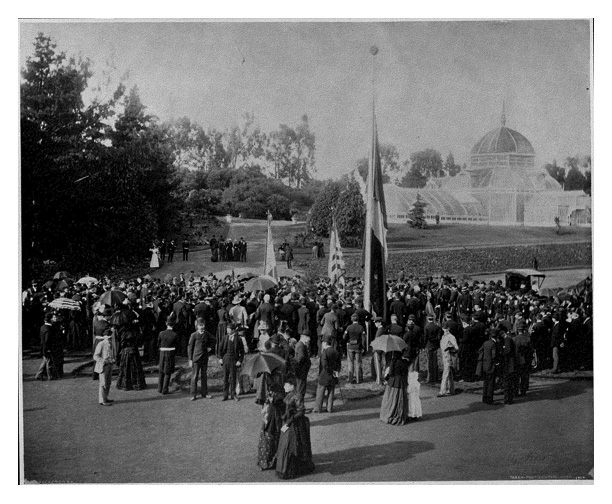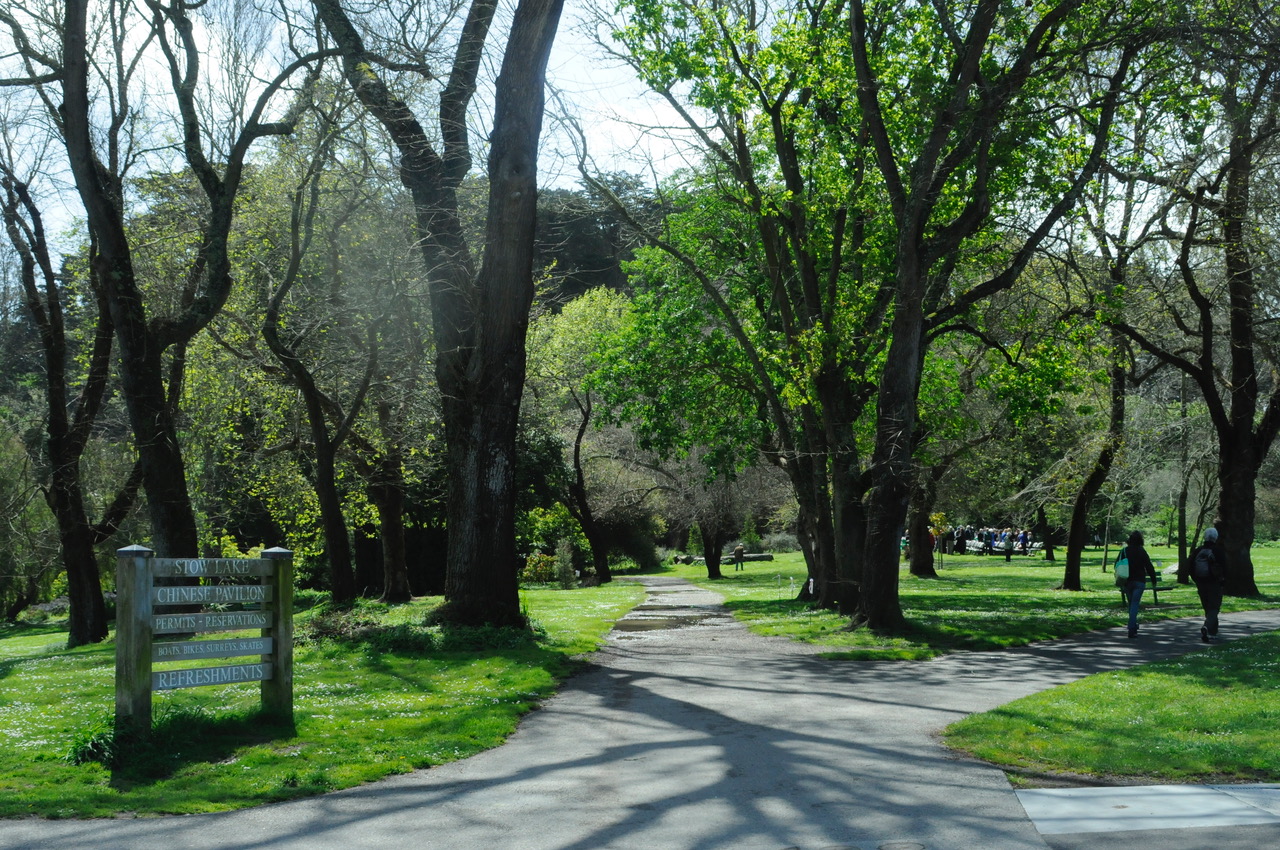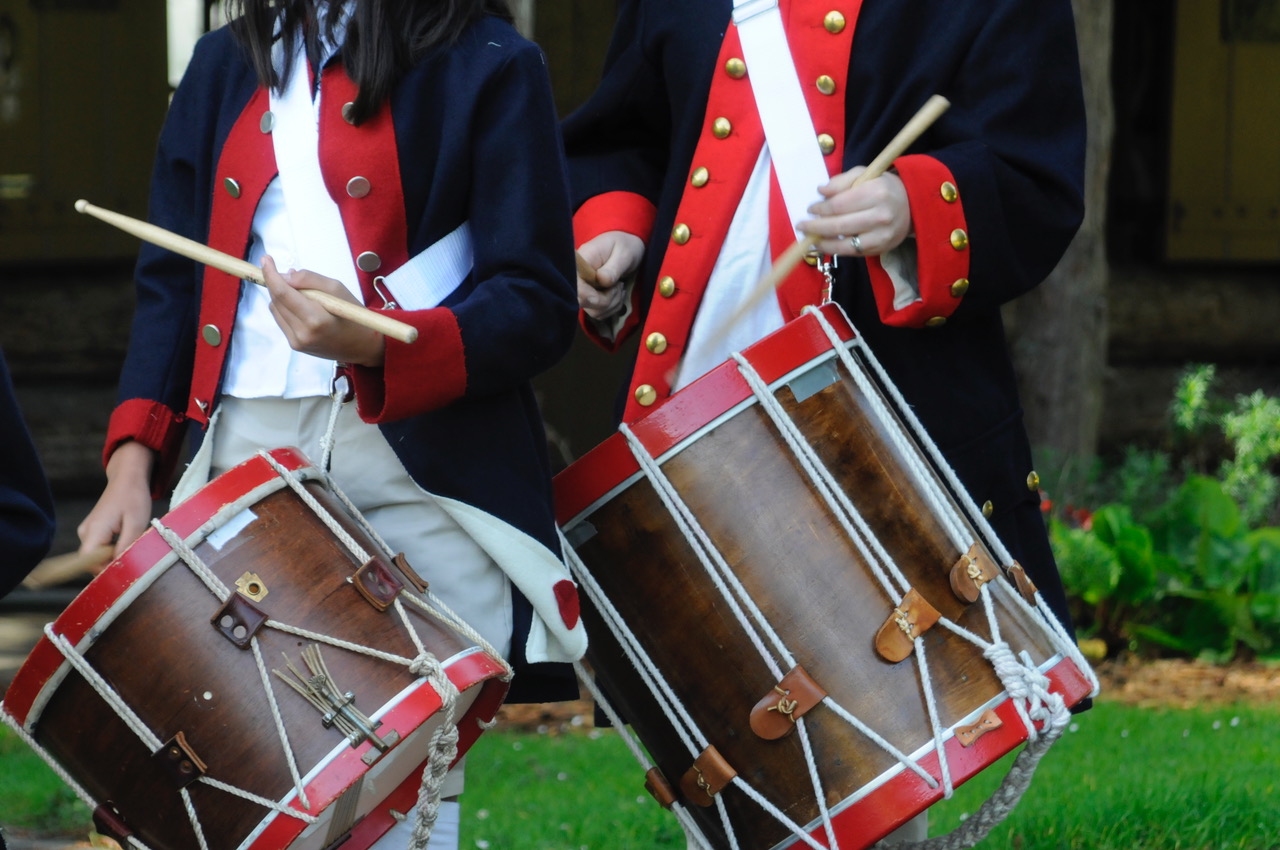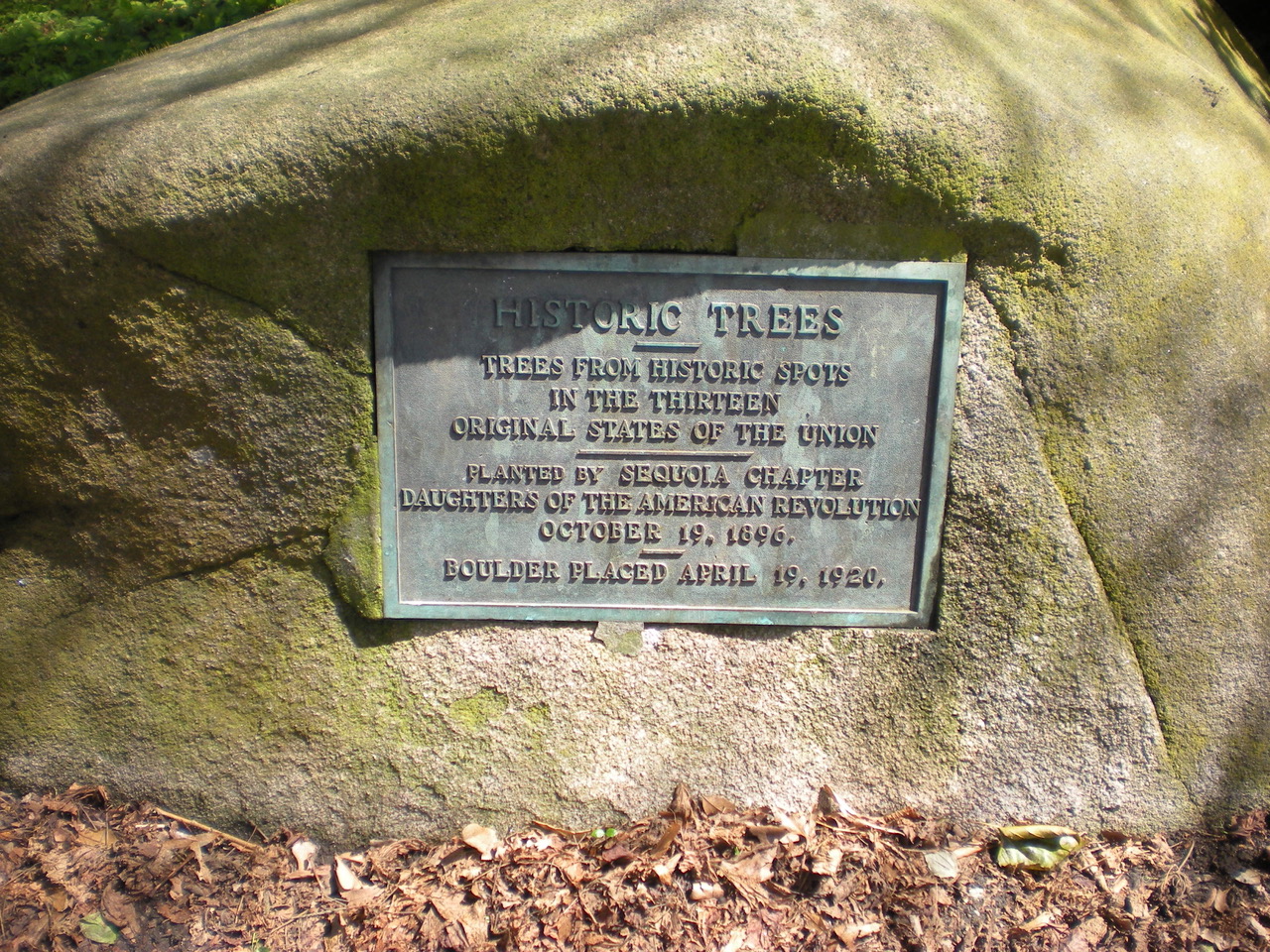Arch of Colonial Trees, Golden Gate Park Dedicated to the Founding of our Country
La Puerta de Oro-San Francisco Chapter, NSDAR
Located in Golden Gate Park, the 5th most visited park in the country, is the Arch of Colonial Trees. Planted in 1894 by the Sequoia Chapter, NSDAR restored in 1976 and 2011, it is a grove of trees dedicated to the founding of our country and the perfect place to sit down and enjoy a picnic with friends and family.
“at an early day, in Golden Gate Park, the natural beauties of which are unsurpassed, a Liberty Tree, which shall perpetuate the name of the Society in California, and the objects for which it was organized, throughout the coming ages.” Ceremonies at Planting the Liberty Tree in Golden Gate Park, Sequoia Chapter, Daughters of the American Revolution April 19, 1894, The One-Hundred and Nineteenth Anniversary of the Battle of Lexington
REDEDICATION AND RESTORATION OF THE ARCH OF COLONIAL TREES LOCATED IN GOLDEN GATE PARK
La Puerta de Oro - San Francisco Chapter, Golden Gate Park Liberty Tree Dedication in 1896 Photographer: I. W. Taber
On October 19, 1896, the anniversary of the surrender of Lord Cornwallis at Yorktown, under the supervision of John McLaren, trees sent from the original 13 States were planted in Golden Gate Park, along the State Tree Walk in the Pioneer Garden. The trees were planted in a curved allée 450 ft in length, by the Sequoia Chapter of the Daughters of the American Revolution. The idea came from Mrs. Adolphus Hubbard, our first State Regent 1891-93 and Sequoia Chapter member, and Mrs. Peter Hughes of Pennsylvania. Although the Park gardeners actually planted the trees, the Daughters added earth from historic sites with a silver trowel, the handle of which was made from the wood of a magnolia planted by George Washington at Mt. Vernon.
(Photo Courtesy: Annette Litle)
The cedar from Pennsylvania was placed in the center of the walk as the keystone, with the trees from the southern states south of it and those from the northern states to its north. The catalpa for Georgia was planted at the far south end, and the maple from New Hampshire and elm from Massachusetts at the north end, now near the beginning of Stow Lake Drive.
On May 29, 1976 in honor of the Bicentennial, the State Tree Walk was re-dedicated, and five of the trees which had not survived were replaced. Officiating at the 1976 ceremony was Mrs. John B. Thomson, Jr., Sequoia Chapter Regent. Mrs. Thomson was a member of our Chapter until her death February 12, 2012, at age 102.
Soil from important historic sites was used in the 1976 re-planting:
Rhode Island – soil from the grave of William Ellery, a Signer of the Declaration of Independence
North Carolina – soil from the grave of Absolom Tatum, Major in the Revolutionary War
Georgia – soil from the Kettle Creek Battlefield, site of a decisive battle in 1779
Virginia – soil from Thomas Jefferson’s grave
Pennsylvania – soil from Valley Forge
Historic Trees Dedication Plaque at Entrance of the Arch of Colonial Trees in Golden Gate Park, San Francisco - Plaque placed April 19, 1920. (Photo Courtesy: Annette Litle)
On May 19, 1920, a granite bolder was placed with a bronze plaque; the boulder had been delayed in Truckee because of a rail strike. The Right Rev. William Ford Nichols, Bishop of California, again said the prayer he had offered at the 1896 ceremony.
On Dec. 28, 2011 a Magnolia Grandiflora was planted to replace the original South Carolina magnolia. On March 1, 2012 an Eastern Hemlock, species Tsuga Canadensis, was planted to replace the original Pennsylvania cedar.
The following was written by Chapter Historian, Gertrude A. Burnett, in 1938.
”Sarah Isabelle Hubbard conceived the idea of planting an historic arch in Golden Gate Park. On Yorktown Day, October 19, 1896, our “Historic Arch,” composed of representative trees from historic spots in the thirteen original states of the Union, was planted, in earth taken from famous Revolutionary localities, near the Pioneer Cabin in Golden Gate Park. The trees were planted in the form of a crescent 450 feet in length, with Massachusetts’ elm at the northern end, Georgia’s catalpa at the southern, and Pennsylvania’s cedar in the center to represent the keystone. Ellen Merrill Wetherbee, the chapter Regent, was chairman for the day. An address was delivered by Zenus U. Dodge. There were over two thousand persons present. At the foot of the Pennsylvania tree was placed soil from the grave of Lafayette in Cemetery Picpus, Paris, France, soil from Wakefield, the birthplace of Washington, and soil from beneath historic trees. While the planting was being done, the band played the Marseillaise and the Star Spangled Banner. Connecticut was represented by a young oak, a year old, a grandchild of the famous Charter Oak, raised from an acorn by Mabel Burgess Hough, a girl of twelve years of age, of Norwich, Connecticut, and presented to the newly organized Valentine Holt Society, C.A.R., of San Francisco. The tree was planted by Miss Helen A. Hallowell, registrar, and Master Herbert R. Baker, color-bearer of the said society. The tree itself was a gift from a Connecticut C.A.R. society.”
the Arch of Colonial Trees Re-dedicated in 2012 by the La Puerta de Oro - San Francisco Chapter, Daughters of the America Revolution
La Puerta de Oro - San Francisco Chapter 2012 Re-dedication Ceremony. Children’s Drum and Fife Corps performance. (Photo Courtesy: Annette Litle)
On March 31, 2012 our chapter held a re-dedication ceremony at the Arch of Colonial Trees, after replacing two more of the original trees. A bright sunny day added to the celebration as chapter members, their families and honored guests gathered. Among the guests were State Officers and District III members. A Proclamation from our San Francisco Mayor was read, honoring our Chapter for its work on the restoration project. Those in attendance were treated to colonial music performed by a children's Fife and Drum Corps in full colonial uniforms. Afterwards guests enjoyed the wonderful refreshments and strolled amid the beautiful trees.
Key to the Arch of Colonial Trees in Golden Gate Park, San Francisco, CA. La Puerta de Oro - San Francisco Chapter, National Society, Daughters of the American Revolution and San Francisco Recreation and Park.
(Photo Courtesy: SF Recreation and Parks)
LIBERTY TREE PLANTED BY SEQUOIA CHAPTER, NSDAR
(ORIGINAL 1894 NEWSPAPER ARTICLE)
On April 19, 1894, the 119th Anniversary of the Battle of Lexington, the chapter planted a Sequoia tree adjacent to the Conservatory of Flowers in Golden Gate Park, with music from the US First Infantry Band, benediction, honor guards from the US and France, commentary by State and Chapter Officers and other dignitaries, and finally a salvo of artillery from the Army’s Fifth Artillery, Battery D.
Sequoia Chapter, April 19, 1894
One of the most notable aspects of the planting was the introduction of earth from the graves of American Revolutionary heroes, battlefields and other historic locations. Some of the graves included: George Washington (original Mt. Vernon grave), Thomas Jefferson, John Hancock, Patrick Henry, the Marquis de Lafayette (from his Paris grave), Betsy Ross, Francis Scott Key, and many more. Soil came from battlefields including Lexington, Concord, Saratoga, and the trenches of Valley Forge.
Speakers included US Army General W.H. Barnes who recalled listening to Abraham Lincoln’s Inaugural Address on the Capital steps. Using a silver trowel, Sequoia Chapter Regent Mrs. William Alvord began the planting by placing the earth from Washington’s grave. The handle of the silver trowel was made of wood from a branch of a tree from Mt. Vernon, planted during Washington’s time. Also placed in the ground was a piece of the cannon used April 19, 1775, at Lexington.
Publisher: H. S. Crocker; 1894. Photographer: I. W. Taber








